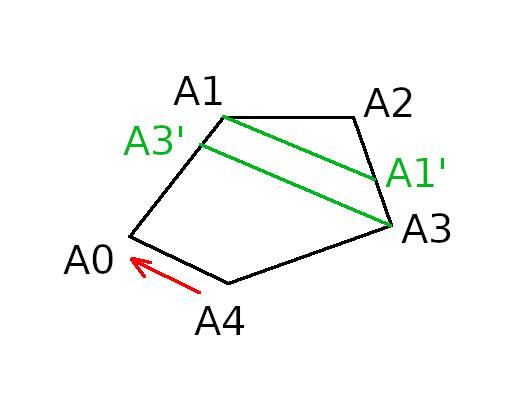Mission polygon with a particular direction attached to it. More...
#include <mission_directed_polygon.h>
Public Types | |
| using | kernel = CGAL::Exact_predicates_exact_constructions_kernel |
| using | polygon = CGAL::Polygon_2< kernel > |
Public Member Functions | |
| mission_directed_polygon (const utils::direction &dir, const utils::polygon &polygon) | |
| ~mission_directed_polygon () | |
| std::size_t | waypoint_count () const |
| double | distance (const utils::point &start) const |
Distance from start to the closest cell. More... | |
| void | build_path (const utils::point &start, std::vector< utils::point > *result) |
| Build mission path. More... | |
Detailed Description
Mission polygon with a particular direction attached to it.
Polygon will be transformed in a way that attached direction became vertical. Then vertical decomposition algorithm will be applied to split polygon into trapezoids and rectangles, collectively called mission_cell

Considering the direct polygon above: {A0, A1, A2, A3, A4} and vector {A4, A0}, it can be decomposed into cells: {A0, A3', A3, A4}, {A1, A1', A3, A3'} and {A1, A1', A2}
Member Typedef Documentation
◆ kernel
| using mission_directed_polygon::kernel = CGAL::Exact_predicates_exact_constructions_kernel |
◆ polygon
| using mission_directed_polygon::polygon = CGAL::Polygon_2<kernel> |
Constructor & Destructor Documentation
◆ mission_directed_polygon()
|
explicit |
Here is the call graph for this function:

◆ ~mission_directed_polygon()
|
default |
Member Function Documentation
◆ waypoint_count()
| auto mission_directed_polygon::waypoint_count | ( | ) | const |
- Returns
- Total number of waypoints in all the cells
◆ distance()
| auto mission_directed_polygon::distance | ( | const utils::point & | start | ) | const |
Distance from start to the closest cell.
◆ build_path()
| void mission_directed_polygon::build_path | ( | const utils::point & | start, |
| std::vector< utils::point > * | result | ||
| ) |
Build mission path.
- Parameters
-
start Starting point of the mission path result vector where mission path will be saved
Here is the call graph for this function:

Here is the caller graph for this function:

The documentation for this class was generated from the following files:
- mission_directed_polygon.h
- mission_directed_polygon.cpp